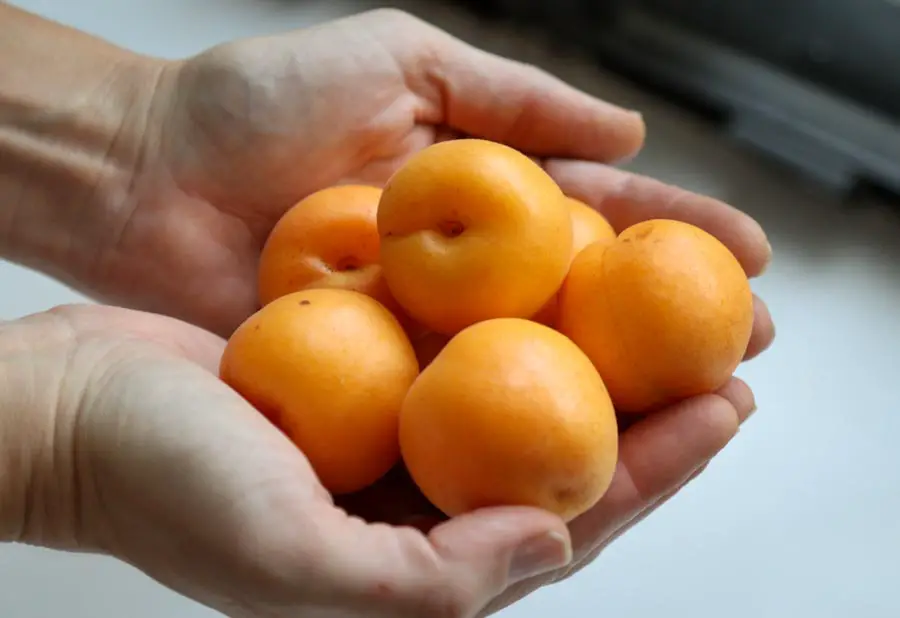
The first year my apricot tree fruited I watched it like a hawk so I could pick the fruit at the ideal time. It seemed like there was a narrow window between the apricots being hard as a rock, and a mushy, mealy mess.
I’ve since learned what to look for when harvesting apricots. There’s more wiggle room than I originally thought, but it helps to know what a perfectly ripe apricot should look, smell, and feel like. So when is the best time to pick apricots?
Most apricots are ready for harvest in June or July, although some varieties could ripen as early as May or as late as August. Climate and weather will affect the exact ripening time. Ripe apricots are deep gold-orange, slightly soft but still firm, and fragrant.
The flavor of a fresh-picked, perfectly ripe apricot is elusive and addictive…and worth the wait. If you know what to look for, choosing when to harvest apricots is easy – whether you wait for the perfect ripeness, or pick a little early to beat the birds. Read on for all my hard-won apricot picking tips. No more mealy apricots for me.
How to Tell an Apricot is Ready for Harvest
The exact time to pick apricots varies pretty widely from cultivar to cultivar, but it is also largely determined by the climate and weather. I live in zone 8b, where we have widely fluctuating winter temperatures, winter warm spells, late spring frosts, and hot and humid summers. Admittedly not an ideal climate for apricots.
Read about choosing apricot trees for temperate climates: The Tastiest Low-Chill Apricot Varieties to Grow at Home.
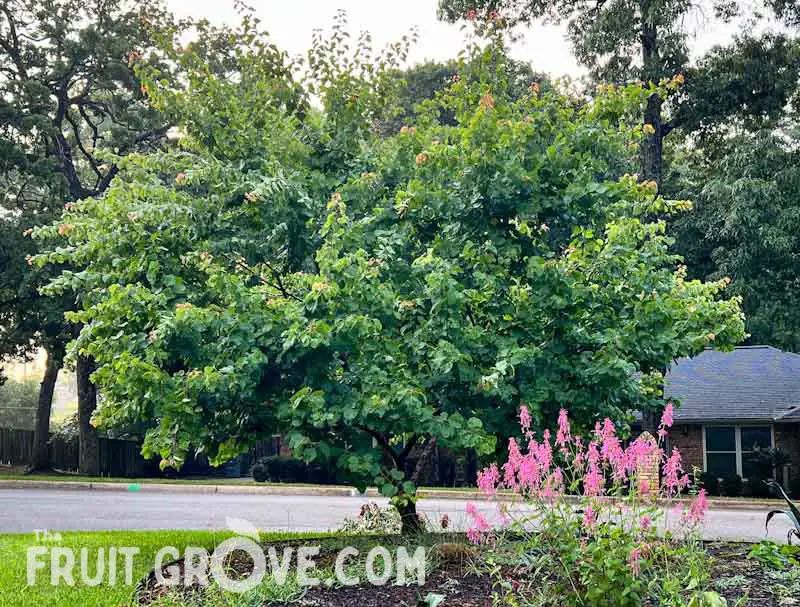
I grow a cultivar that flowers late to try to withstand those spring freezes: ‘Golden Sweet’. However, this year we had such a warm January that the tree bloomed a little early. It made it through the March cold snaps, thankfully, and the apricots were ready to pick by the very end of May. In other years we had colder winters, delayed blooming, and later fruiting. Or a warmer winter, and almost no fruit at all.
Bloom time has a lot to do with how well an apricot fruits. Learn more about how and when apricot trees blossom (plus how to choose the right one for your area) here: When Do Apricot Trees Flower? Best Varieties by Bloom Time.
If the weather is cooperative, the apricots on a tree typically ripen close together. Once you see the green, hard fruits start to change color to golden orange, keep an eye on them. Apricots go from hard to ripe quickly, so check on them every day.
When in doubt, it’s better to pick a little early than a little late. Over-ripe apricots hanging on the tree could invite bugs or disease, or attract wildlife to your still-ripening fruit. Continue reading to see exactly what a ready-to-pick apricot looks (and feels and smells) like.
What a Ripe Apricot Looks Like
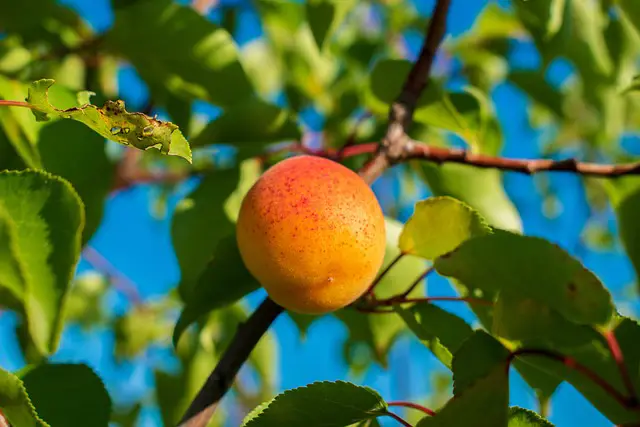
- Perfectly ripe apricots should have full, deep color. The exact color varies from pale yellow-gold (for white-fleshed apricots) to deep orange with a red blush. Most ripe apricots are a golden orange color with no trace of green. An exception is ‘Blenheim’, which can have a slight green tint at the top even when fully ripe.
- In general they should have plump, smooth skin, although some small blemishes are fine. A few small, wrinkly dented spots just mean a bug took a bite out of the fruit as it ripened. The fruit is still perfectly edible.
- If you notice larger discolored areas, extensive brown spots, scabby areas, or larger holes, avoid eating the apricot. Pick and discard any significantly damaged fruit.
What a Ripe Apricot Feels Like
- The flesh of a ripe apricot should feel dense, but give a little when gently pressed.
- The skin should feel slightly velvety, but not as fuzzy as a peach.
- A rock-hard apricot is not fully ripe yet, but you could pick the fruit a little early and allow it to soften (more on that later).
- A ripe apricot should separate from the tree readily. If you have to tug, it’s not fully ripe yet.
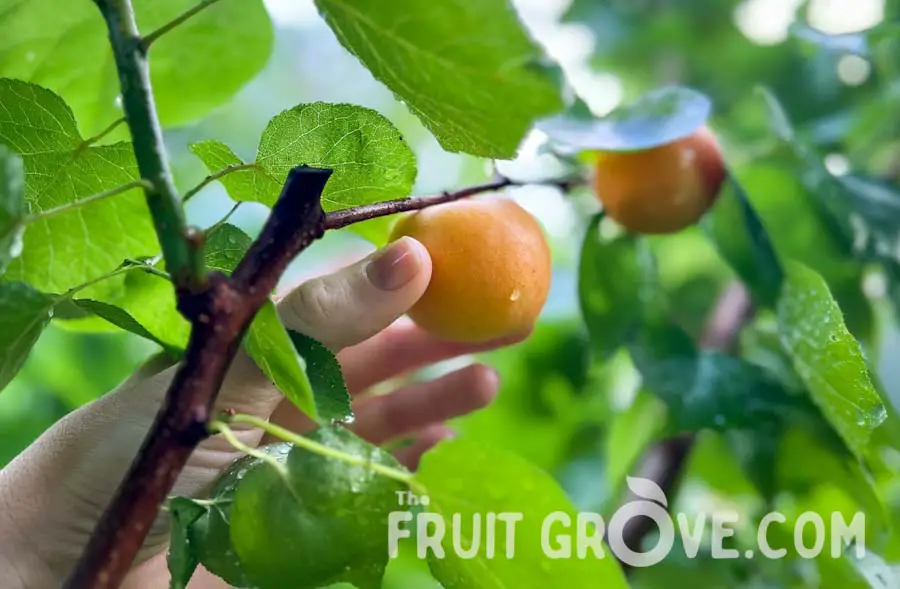
What a Ripe Apricot Smells Like
- Most apricots have a pretty strong aroma when they mature. They should smell sweet, somewhat floral, and very fragrant. If you’re not sure if the apricot is ripe yet, give it a sniff. Wait for some fragrance before picking.
How to Pick Apricots
The most important thing to know when picking apricots is to be gentle. If the apricot is fully ripe, it should separate easily from the stem. With a gentle grip, pull lightly on the fruit. If there’s too much resistance, wait another day or so before picking.
Once you’ve picked the apricot, don’t toss it into the basket or container. Place it gently in a single layer to prevent bruising. Use a wide container – such as a basket, box, or crate. It would be a shame to time the harvest perfectly, only to accidentally bruise the fruit.
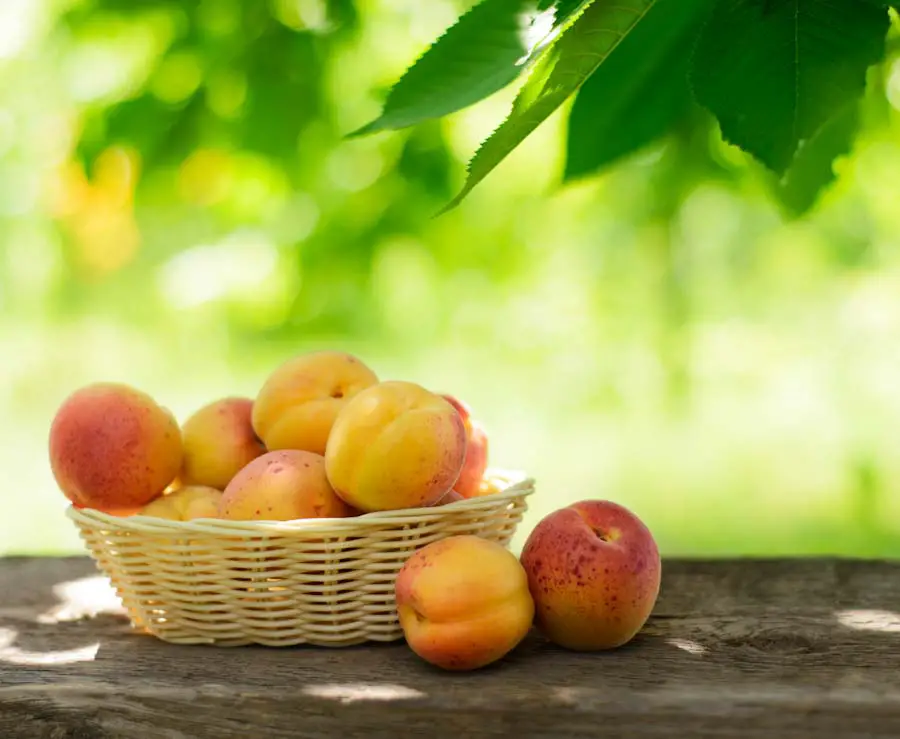
Will apricots continue to ripen after being picked?
After harvest, apricots will get juicier, softer, and the color will deepen, but they won’t get any sweeter. The sugar content and overall flavor are determined by how the fruit ripens on the tree, including its exposure to light, water, and nutrients.
You can pick an apricot a few days early and allow it to soften on the counter or in a paper bag. This is a good strategy if you want to buy some time before processing or eating your fresh apricot harvest. And, of course, this gives you a chance to pick the fruit before the birds and other wildlife get to it.
Once the apricots are slightly soft, store them in the refrigerator to slow the ripening process. They’ll only be good for a few days – up to a week at most – so plan to use the fruit right away.
If you want to pick early, wait until the fruit is fully colored but still firm. If you pick while there is still a good amount of green on the apricot, it won’t be very sweet or flavorful. Try to time the harvest to get maximum sweetness, but before the fruit is fully soft.

